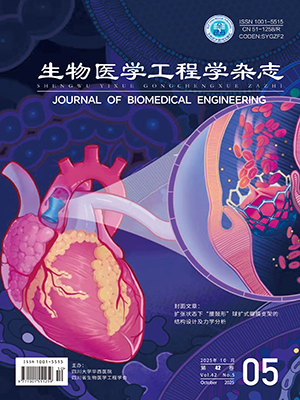Intelligent medical image segmentation methods have been rapidly developed and applied, while a significant challenge is domain shift. That is, the segmentation performance degrades due to distribution differences between the source domain and the target domain. This paper proposed an unsupervised end-to-end domain adaptation medical image segmentation method based on the generative adversarial network (GAN). A network training and adjustment model was designed, including segmentation and discriminant networks. In the segmentation network, the residual module was used as the basic module to increase feature reusability and reduce model optimization difficulty. Further, it learned cross-domain features at the image feature level with the help of the discriminant network and a combination of segmentation loss with adversarial loss. The discriminant network took the convolutional neural network and used the labels from the source domain, to distinguish whether the segmentation result of the generated network is from the source domain or the target domain. The whole training process was unsupervised. The proposed method was tested with experiments on a public dataset of knee magnetic resonance (MR) images and the clinical dataset from our cooperative hospital. With our method, the mean Dice similarity coefficient (DSC) of segmentation results increased by 2.52% and 6.10% to the classical feature level and image level domain adaptive method. The proposed method effectively improves the domain adaptive ability of the segmentation method, significantly improves the segmentation accuracy of the tibia and femur, and can better solve the domain transfer problem in MR image segmentation.
Citation: SUN Yubo, LIU Jianan, SUN Zewen, HAN Jianda, YU Ningbo. A generative adversarial network-based unsupervised domain adaptation method for magnetic resonance image segmentation. Journal of Biomedical Engineering, 2022, 39(6): 1181-1188. doi: 10.7507/1001-5515.202203009 Copy
Copyright © the editorial department of Journal of Biomedical Engineering of West China Medical Publisher. All rights reserved




